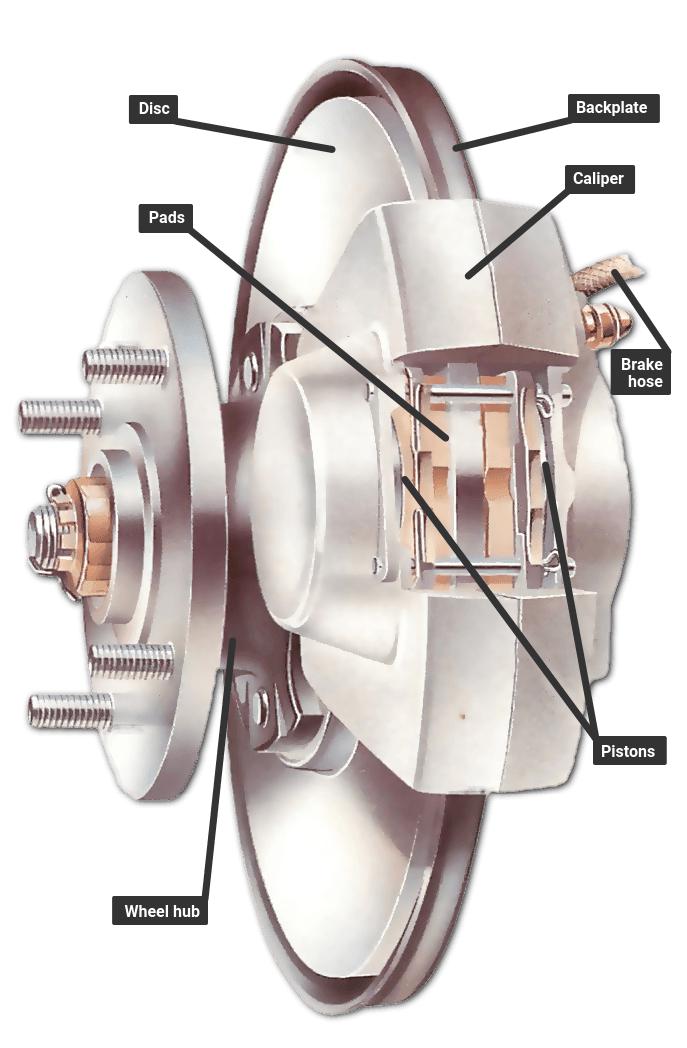Most modern cars have brakes on all four wheels, operated by a hydraulic system . The brakes may be disc type or drum type.
The front brakes play a greater part in stopping the car than the rear ones, because braking throws the car weight forward on to the front wheels.
Many cars therefore have disc brakes , which are generally more efficient, at the front and drum brakes at the rear.
All-disc braking systems are used on some expensive or high-performance cars, and all-drum systems on some older or smaller cars.
Disc brakes
The basic type of disc brake, with a single pair of pistons. There may be more than one pair, or a single piston operating both pads, like a scissor mechanism, through different types of calipers – a swinging or a sliding caliper.
A disc brake has a disc that turns with the wheel. The disc is straddled by a caliper , in which there are small hydraulic pistons worked by pressure from the master cylinder.
The pistons press on friction pads that clamp against the disc from each side to slow or stop it. The pads are shaped to cover a broad sector of the disc.
There may be more than a single pair of pistons, especially in dual-circuit brakes.
The pistons move only a tiny distance to apply the brakes, and the pads barely clear the disc when the brakes are released. They have no return springs .
When the brake is applied, fluid pressure forces the pads against the disc. With the brake off, both pads barely clear the disc.
Rubber sealing rings round the pistons are designed to let the pistons slip forward gradually as the pads wear down, so that the tiny gap remains constant and the brakes do not need adjustment.
Many later cars have wear sensors leads embedded in the pads. When the pads are nearly worn out, the leads are exposed and short-circuited by the metal disc, illuminating a warning light on the instrument panel.
Post time: May-30-2022

